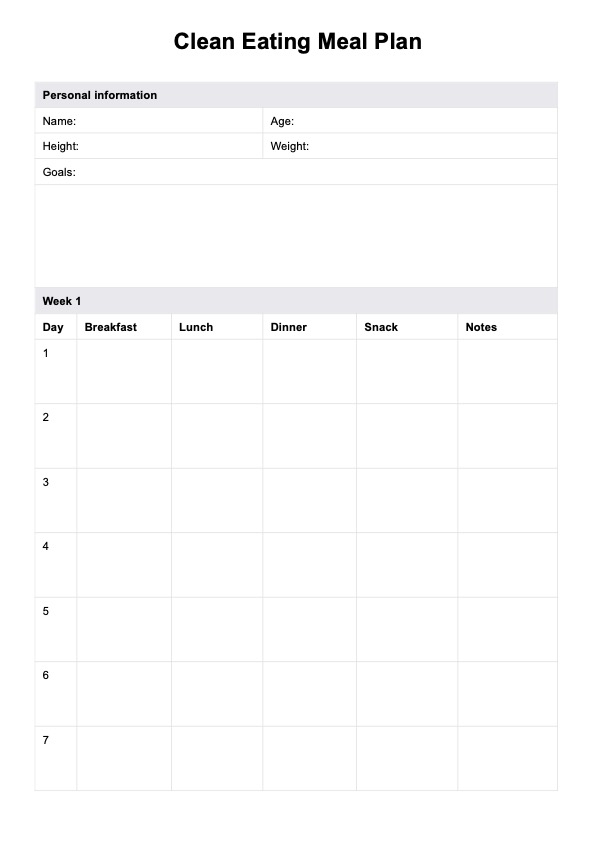Clean eating involves consuming whole, unprocessed foods to maximize nutrient intake and improve overall health.

Clean Eating Meal Plan
Discover a Clean Eating Meal Plan tailored for health professionals to support clients in adopting whole, unprocessed diets for better health.
Use Template
Clean Eating Meal Plan Template
Commonly asked questions
On a clean eating diet, you focus on vegetables, fruits, whole grains, lean proteins, and healthy fats while avoiding processed foods and added sugars.
A clean meal plan can support weight loss by focusing on whole foods, lean proteins, healthy fats, and minimally processed foods while avoiding refined sugars, fried foods, and sugary beverages. This approach helps manage calorie intake, improves satiety, and promotes a healthy lifestyle.
EHR and practice management software
Get started for free
*No credit card required
Free
$0/usd
Unlimited clients
Telehealth
1GB of storage
Client portal text
Automated billing and online payments











